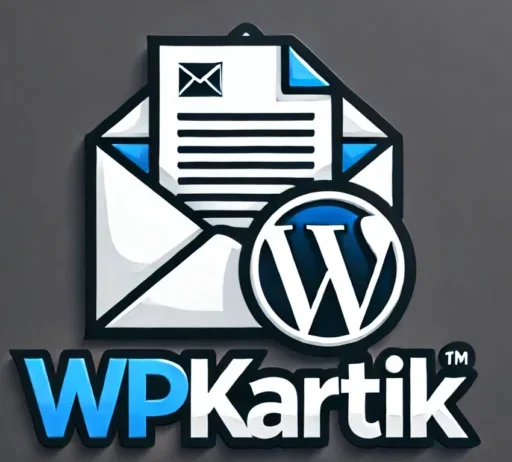Last updated on June 19th, 2025 at

Kartik Sharma ✅
Reviewed by Email Marketing Expert
Kartik Pandit, Founder of WPKartik
6+ years of experience helping businesses boost revenue through high-converting email campaigns.
Why People Don’t Open Your Emails (And How to Fix It)
You send an email, hoping people will read it… but almost no one does.
It feels like no one is listening.
Most people think the problem is the subject line. But that’s just a small part of it.
After helping businesses and creators improve their email results for years, I’ve seen one thing again and again:
If you want to increase email open rate, it’s not about fancy tricks — it’s about understanding what actually makes people click.
In this post, I’ll show you how to increase email open rates using a simple method called the O.P.E.N. Formula.
It’s easy to follow and works even if you’ve never sent a single marketing email before.
Let’s break it down and finally get your emails opened and read.
What Is a Good Email Open Rate?
So, how do you know if your email open rate is actually good?
Well, it depends a little on what kind of emails you’re sending and who you’re sending them to. But in general:
👉 If around 20–25 out of every 100 people open your email, that’s considered normal.
👉 If you’re getting more than 25%, that’s great!
👉 And if it’s under 15%, don’t worry — we’ll talk about how to fix that.
| Industry | Average Open Rate |
|---|---|
| Retail | 18.0% |
| E-commerce | 15.5% |
| Technology | 22.0% |
| Education | 25.5% |
| Healthcare | 24.5% |
| Non-Profit | 30.0% |
| Financial Services | 21.5% |
Some industries, like schools, nonprofits, or personal brands, often get even higher open rates — sometimes 40% or more!
Want to see the actual numbers? Here’s a helpful chart with averages by industry.
The main thing to remember is this:
Even if your open rates aren’t great right now, they can get better — a lot better — with a few small changes.
As you can see, the Non-Profit sector tends to see higher open rates, while E-commerce emails can have lower rates. Your industry can guide your expectations and give you a clear idea of where you stand in comparison.
The O.P.E.N. Formula: A Simple Way to Increase Email Open Rates
If you’re wondering how to increase email open rates, the O.P.E.N. Formula is a super simple method that works — even if you’re brand new to email marketing.
Each letter in O.P.E.N. stands for one key piece of the puzzle that gets more people to actually open your emails.
Let’s break it down:
🟠 O – “Outstanding Subject Line”
Your subject line needs to grab attention in a split second. If it doesn’t stand out, your email will just blend in with the rest of the inbox.
Here’s what works:
Be Direct: Get straight to the point so your readers know what they’re getting.
“Last chance: Your 50% off coupon expires tonight!”
Add Urgency: People are more likely to open when they feel they might miss out.
“Only 5 spots left for our webinar – reserve yours now!”
Be Specific: A specific subject line promises more value.
“How to boost your sales by 20% this month (easy tips inside)”
Create Curiosity: Leave them wondering what’s inside — just enough to make them want to open.
“You won’t believe what happened after I tried this…”
🟠 P – “Personal Touch”
People love feeling like an email was written just for them. Using their name or referencing something personal makes your email stand out.
Examples:
Name-Based:
“Sarah, we’ve got a special offer just for you”
“Hey Jake, here’s that resource you requested”Segment-Based:
“Hey Sarah, ready to take your photography skills to the next level?” (if she’s shown interest in photography-related content)
“Jacob, your website audit is ready — let’s fix it together!” (if he’s been through a website audit)
🟠 E – “Engaging Preview Text”
The preview text is like the “sneak peek” into your email. It should build on your subject line and create even more curiosity.
Examples:
If your subject line is: “This trick doubled my website traffic”
Your preview could be: “Here’s exactly how I did it, and how you can too”If your subject line is: “Your free gift is waiting”
The preview could be: “Click to claim your gift before it’s gone — don’t miss out!”
Pro Tip: Think of the preview as your second shot at getting them to click. Make it count!
🟠 N – “Now is the Time” (Perfect Timing)
Timing is everything. Even the best subject line can flop if you send it at the wrong time.
Best Practices:
Send emails on Tuesday or Thursday mornings (around 9–11 am) — when people are actively checking their inbox but haven’t gotten buried with emails yet.
Avoid sending emails during the weekend or late at night, as people may not see them until Monday.
Test your timing: Try sending emails at different times of the day, and see when your audience engages the most.
Example:
If you’re sending an email about a time-sensitive offer or sale, make sure it lands during the day, not at night.
“Flash Sale: 50% Off Ends in 6 Hours! Shop Now!” (send it during work hours when people are more likely to act fast).
And That’s the O.P.E.N. Formula!
By using these simple but powerful tips, you’ll have a much better chance of getting your emails opened. Combine these strategies, and watch your email open rates improve — without all the guesswork!
How to Improve Email Open Rates (14 Super Proven Tips)
1. Use Personal Subject Lines (It Can Boost Opens by 26%!)
Did you know that just by adding someone’s name to the subject line, you can make 26% more people open your emails?
📊 Yep, according to the Campaign monitor, emails that feel personal—like they were meant just for you—get opened way more often.
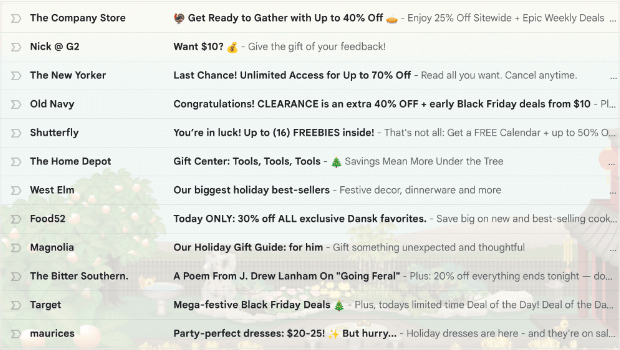
Why Does This Work?
Think about your own inbox. What catches your eye more?
“Huge sale happening now!”
or“Kartik, don’t miss this deal made for you”
Most people will click the second one—because it feels more personal. It’s like the sender actually knows you. And that tiny difference can make a huge impact.
🛠️ How to Make Your Subject Lines Better:
Here’s what you can start doing right now to improve them:
✅ 1. Add Their Name (If You Can)
If your email tool lets you use names, do it!
Example: “Alex, here’s something just for you”
Or: “Hey Sarah, check this out!”
Even if you can’t add names, make it sound friendly and one-on-one.
✅ 2. Keep It Short
Most people check emails on their phones. If your subject is too long, it gets cut off.
Aim for 6–8 words max.
✅ 3. Make Them Curious
Use subject lines that make people go, “Hmm… what’s this about?”
“You’re going to want to see this”
“Guess what we made for you?”
✅ 4. Add Urgency (But Don’t Be Pushy)
Let people know it’s important—without sounding spammy.
“Only a few hours left!”
“Last chance to claim your spot”
✅ 5. Test Different Styles
Sometimes, changing just one word can double your open rate.
Try fun ones, serious ones, question-based ones—and see what works best for your audience.
P.S – Want to optimise you email subject line this is only guide you need
💌 2. Make Your Emails Personal (Boost Opens by 26%!)
Here’s a cool stat: according to mailmodo
Personalized emails can increase open rates by 26%!
Why? Because people pay attention when it feels like you’re talking to them, not at everyone.
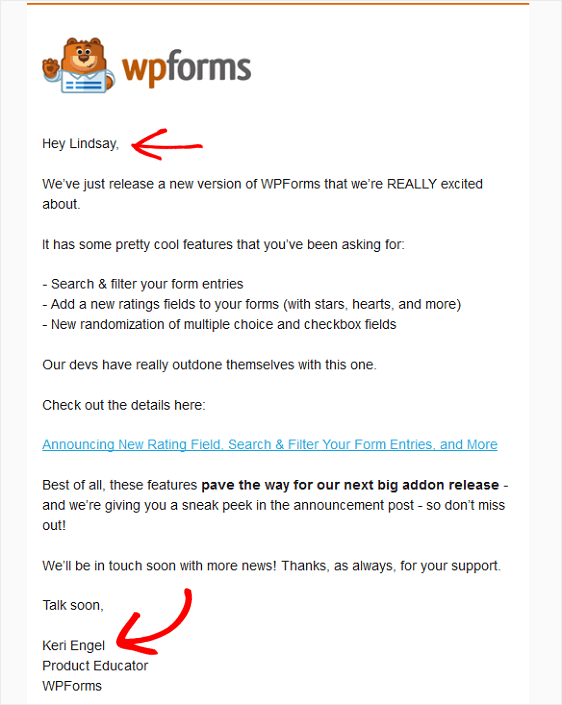
🤔 Why Do Personalized Emails Work So Well?
Imagine getting two emails:
“Here’s your weekly update”
“Hey Priya, here’s something you’ll love!”
Which one are you more likely to open?
Exactly. We’re all more likely to read something when it feels like it was written just for us.
🔧 How to Personalize Your Emails (Without Being Creepy)
✅ 1. Use Their Name (Simple, but Powerful)
Subject line: “Hey Ankit, we saved this just for you”
In the message: “Hi Sarah! We saw you liked our last blog post…”
It feels friendly, and it works.
✅ 2. Segment Your Email List
Don’t send the same email to everyone. Group people by what they like or do:
Shoppers vs. readers
New subscribers vs. loyal customers
People who clicked your last email vs. those who didn’t
This way, your message actually matters to them.
✅ 3. Recommend Things They Actually Want
If you know what someone likes, show them more of it.
“Loved that last article on fitness? Here’s another one you might enjoy!”
“You bought a phone case—how about a matching charger?”
Tailored content = more clicks and opens.
✅ 4. Talk Like a Human
No one wants to read emails that sound like a robot wrote them. Use a friendly, natural tone.
Write like you’re texting a friend—not giving a sales pitch.
Read this – Email Personalization: How I Increased My Email Conversions by 45% with Personalization
3. Optimize Your Preheader Text
🤔 What’s a Preheader, Anyway?
It’s that little line of text you see next to the subject line in your inbox. Think of it as a mini movie trailer for your email — a quick preview of what’s inside.
If it’s boring or blank? People just scroll past.
If it’s helpful or curious? They tap to open.

💡 3. Use Preheader Text Wisely (One Simple Change = +8% Opens!)
Here’s a cool fact:
🧪 Autoplicity saw a 7.96% increase in open rates just by adding preheader text to their emails — and testing showed the version with preheader worked way better.
🔧 How to Make Preheader Text Work for You
✅ 1. Add More Value
Use it to build on your subject line, not repeat it.
Subject: “Last Chance for 20% Off”
Preheader: “Hurry! This offer disappears tonight”
✅ 2. Keep It Short & Snappy
Aim for 35–50 characters so it doesn’t get cut off on phones or Gmail.
✅ 3. Use Action Words
Think: “Grab your freebie” or “See what’s inside.”
You want them to do something — like open your email.
✅ 4. Never Leave It Blank
If you don’t set one, some email apps show random junk like “View this email in your browser.” 😬 That’s wasted space!
🏷️ 4. Build Instant Trust with BIMI (Boost Opens by 10–50%!)
Here’s something most marketers still overlook…
🧠 BIMI (Brand Indicators for Message Identification) adds your logo next to your email in the inbox — and that little image can make a big difference.

📈 Real results:
✅ Yahoo Mail saw a 10% engagement lift from BIMI
✅ Entrust & Red Shift found BIMI can:
Raise open rates by 21%
Boost brand recall by 18%
Increase purchase likelihood by 34%!
Even a tiny 3.4% boost is worth the setup.
Full article →
🤔 Wait, What Is BIMI Exactly?
Think of it like your brand’s “verified checkmark” in the inbox.
📬 Instead of just a sender name, people see your official logo next to your subject line. It instantly makes your email look more legit and recognizable.
🔧 How to Set Up BIMI (In Simple Terms)
✅ 1. Get Email Security Right
Before you can use BIMI, you’ll need to set up DMARC — a security protocol that proves your emails are actually from you (and not spam or phishing).
✅ 2. Verify Your Logo
You’ll need an SVG file of your logo and a Verified Mark Certificate (VMC). This tells inboxes like Gmail or Yahoo: “This sender is legit.”
✅ 3. Publish Your BIMI Record
It’s a quick DNS update — your tech team or hosting provider can handle this part easily.
✅ 4. Test & Watch Opens Climb
Once BIMI is live, people will start seeing your logo right in their inbox list. That visual trust = more opens.
👀 Why BIMI Matters
Imagine two emails side-by-side:
📩 One has no logo.
📩 The other shows a clean, sharp brand logo next to it.
Which one would you trust more?
Exactly. People click on what they recognize and trust.
👤 5. Pick the Right Sender Name (42% of People Look at This First!)
🤔 Why Does the Sender Name Matter So Much?
Because it’s the first thing most people notice when your email hits their inbox.
A Litmus-Fluent survey found that 42% of email users check the sender name first to decide if they’ll open your email.
That’s even more than those who look at the subject line (34%) or preview text (24%).
So if they don’t recognize or trust the sender name? They’ll likely ignore or delete your email.
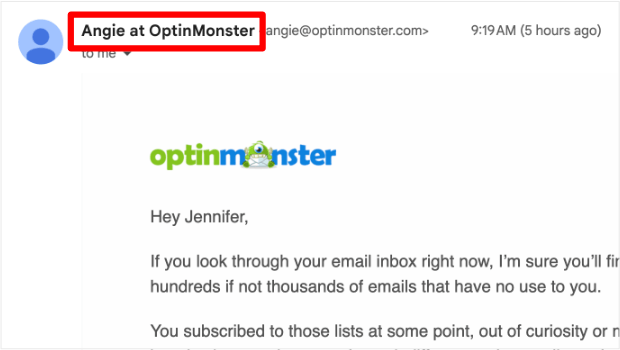
💡 4. Make Your Sender Name Trustworthy (And Click-Worthy)
A boring or unfamiliar sender name like newsletter@brand.com can kill your open rate.
But a friendly, familiar name? That builds trust — and clicks.
🔧 How to Improve Your Sender Name
✅ 1. Use a Name People Know
Think: your brand name, or a real person from your team.
Good example: “Emma at BrightBakery”
Not so good: “no-reply@brightbakery.com”
✅ 2. Try Different Styles
Test a few variations:
“BrightBakery Team”
“Sarah from BrightBakery”
“Your Weekly Treats from BrightBakery”
See what gets the best response.
✅ 3. Be Consistent
Once you find a name that works, stick with it.
Familiar names = more opens over time.
✅ 4. Avoid Generic or Spammy Senders
If it sounds like spam (e.g. “Updates” or “DoNotReply”), it’ll be treated like spam.
Use human-friendly names instead.
📬 6. Segment Your Email List (Boost Opens by 30% Instantly!)
🤔 Why Bother with Segmentation?
Because sending the same email to everyone is like giving every guest at a party the same gift — some will love it, but many just won’t care.
🎯 Segmentation means sending the right message to the right people — and that makes your emails feel more personal, relevant, and worth opening.

📈 Real Results:
According to GlueUp, segmented email campaigns get 14.31% more opens
Read more →NotifyVisitors reports 30% higher open rates for segmented vs. non-segmented emails
Check the stats →
💡 6. Send Smarter with Segmentation (Not More Emails — Better Ones)
Instead of blasting the same email to everyone, send smaller, more targeted ones. Here’s how:
🔧 Ways to Segment Your Email List
✅ 1. By Interests or Categories
Selling clothes? Create segments like:
Men’s Clothing
Women’s Clothing
Accessories
Then send product updates only to the people who care.
✅ 2. By Behavior (Opens, Clicks, or Purchases)
Send:
A follow-up to people who clicked but didn’t buy
A re-engagement email to those who haven’t opened in a while
A thank-you or bonus offer to recent buyers
✅ 3. By Location, Age, or Other Demographics
Great for local events, seasonal offers, or age-specific content.
E.g., Send a winter coat promotion to cold regions only.
✅ 4. Send Tailored Content
Once you’ve created your segments, speak directly to their needs:
Discounts for loyal customers
Product tips for new users
Reminders for people who left items in their cart
if you want to segment you list then this guide will surely help you to segment your email list .
⏰ 7. Send Emails at the Right Time (Timing Can Make or Break Your Open Rate!)
🤔 Why Does Timing Matter So Much?
Because even your most exciting, beautifully written email won’t get opened if it lands in the inbox at the wrong time — like when your audience is asleep, offline, or busy.
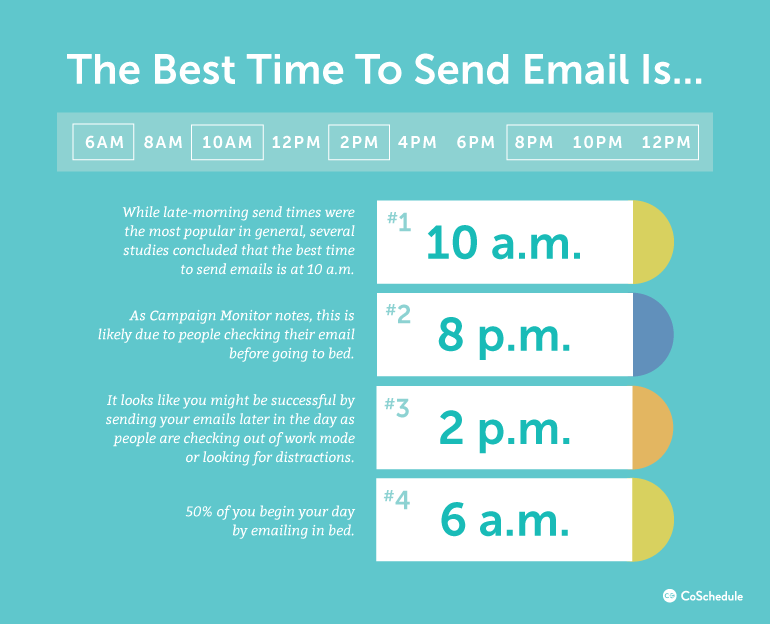
A study by Mailmunch found:
Emails sent on Monday had the highest open rate: 22.0%
Sunday emails had a lower open rate: 20.3%
Click-throughs peaked on Tuesday at 2.4%
Read the full stats →
💡 7. Get Your Timing Right (It’s an Easy Win!)
When your email shows up at the right moment, it has a better chance of being opened right away — and not buried under dozens of others later.
🔧 How to Find the Best Time to Send
✅ 1. Think About Your Audience’s Daily Routine
Are they:
Busy parents checking emails early in the morning?
Office workers active during lunch breaks?
Entrepreneurs burning the midnight oil?
Send emails when they’re most likely to be checking their inbox.
✅ 2. Start with Proven Time Slots
Try:
Weekdays over weekends
8–10 AM (start of workday)
1–3 PM (post-lunch scroll time)
✅ 3. Avoid Dead Zones
Late nights and weekends usually mean lower open and click rates, unless your audience is super active during those times.
✅ 4. Test It Yourself (A/B Style)
Send the same email to two groups at different times.
Example:
Group A gets it at 9:00 AM
Group B gets it at 2:00 PM
See which one performs better — and use that insight for future sends.
8. Make Emails Mobile-Friendly
Most people check their emails on their phones. If your email looks bad on a small screen, they might delete it without reading. A mobile-friendly email means more opens, more clicks, and happier readers.

How to improve it:
Use a simple layout: One column designs work best on small screens. Avoid clutter and keep it clean.
Make text easy to read: Use larger fonts (at least 14–16px) so people don’t have to zoom in.
Use buttons, not links: Buttons are easier to tap on a phone than tiny text links. Make your call-to-action clear and clickable.
Keep images small and responsive: Images should resize automatically to fit the screen. Also, don’t rely on images alone—some phones block them by default.
Test on mobile: Always preview your email on a phone before sending it. Make sure everything looks good and works.
Quick tip: If your email is easy to read and use on a phone, people are more likely to open and engage with it.
9. Provide Valuable and Relevant Content
If your emails are helpful, interesting, or solve a real problem, people will want to open them. If your content feels random or useless, they’ll stop opening—or even unsubscribe.
How to improve it:
Know what your audience cares about: Think about what problems they have or what they want to learn. Then, give them content that helps.
Example: If you’re in marketing, send tips they can use right away.
Stick to one clear message per email: Don’t overload with too many topics. Keep it focused and easy to follow.
Use a friendly, simple tone: Write like you’re talking to a real person. No need for fancy words or marketing fluff.
Mix it up: Share helpful tips, how-tos, product updates, or even a behind-the-scenes look at your business—just keep it relevant.
Quick tip: Before you hit send, ask yourself: Would I want to read this if it landed in my inbox? If yes—you’re on the right track.
10. Avoid Spam Filters
If your email ends up in the spam folder, no one will see it—no matter how good it is. Avoiding spam filters helps your emails land in the inbox where they belong.
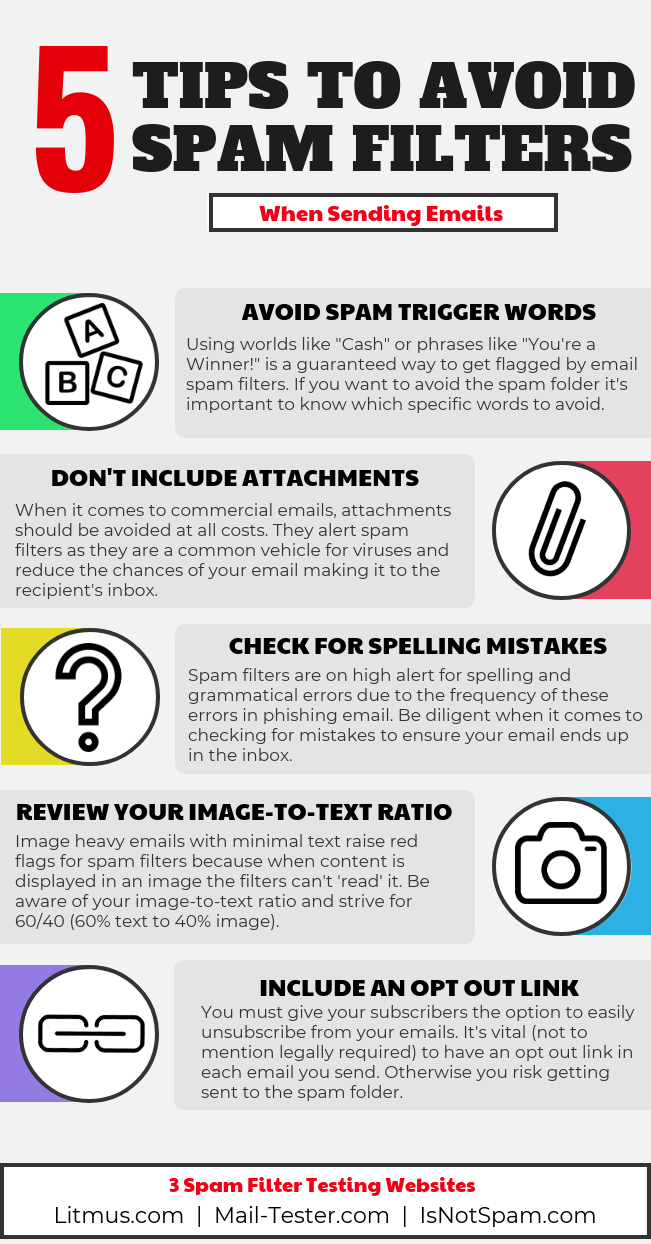
How to improve it:
Don’t use spammy words: Avoid all-caps, too many exclamation marks, or phrases like “Buy now!!!” or “Make money fast.” These trigger spam filters.
Use a real sender name and email: People (and spam filters) trust emails that come from real names, not “noreply@something.com.”
Ask people to add you to their contacts: When someone adds your email to their contact list, your emails are less likely to go to spam.
Avoid too many images or links: A balanced email with both text and images works better. Don’t overload your message with buttons or links.
Set up email authentication (like SPF, DKIM, DMARC): These are technical settings that help email providers know you’re legit. Your email platform can help set these up.
Quick tip: Always test your email before sending. Most email tools can show if it might land in spam—fix issues before it’s too late.
Read This – Email Deliverability Best Practices 2025: 10 Proven Ways to Avoid Spam & Boost Open Rates
11. Test and Analyze Your Campaigns
If you’re not checking what’s working and what’s not, you’re just guessing. Testing helps you understand what your audience likes, so you can do more of what gets results.
How to improve it:
Use A/B testing: Try sending two versions of your email with small changes—like different subject lines, images, or buttons. See which one gets more opens or clicks.
Track key numbers: Watch your open rates, click rates, and unsubscribes. These tell you what’s working and where you can improve.
Test one thing at a time: Don’t change everything in one go. Keep it simple—test one thing, learn from it, then try the next.
Use your email platform’s reports: Most tools like Mailchimp, ConvertKit, or Brevo show you stats. Use them to make smarter decisions for future emails.
Quick tip: Don’t guess—test! Even small changes can lead to big improvements over time.
12. Use Emojis in Subject Lines (Sparingly)
Emojis can grab attention in a crowded inbox. They add color and emotion, and can help your subject line stand out. But if you overdo it, it can look spammy or unprofessional.

How to improve it:
Use 1 emoji max: One is enough to catch the eye without overloading the message.
Example: “🎉 Your 20% Off Code Is Inside”
Match the emoji to your message: Use emojis that make sense with the topic. Don’t throw in random ones just for fun.
✅ Good: “🕒 Time’s Running Out!”
❌ Not great: “🦄 You’ll Love This Sale” (unless you actually sell unicorn stuff!)
Test with your audience: Some people love emojis, others don’t. Try using them in a few emails and see how your audience reacts.
Don’t replace words: Use emojis with words, not instead of them. Keep your message clear.
Quick tip: Emojis are like seasoning—just a pinch can make your subject line pop. Too much? It’s a mess.
13. Make Use of Email Automation & Behavioral Triggers
Automation saves you time and sends the right message at the right time—without you having to do it manually. When you send emails based on what people do (like signing up or clicking a link), it feels more personal and gets better results.

How to improve it:
Set up welcome emails: When someone joins your list, automatically send a warm welcome + helpful info. People are most engaged right after signing up.
Use behavior-based triggers: Send emails based on what people do (or don’t do).
Example: If someone clicks on a product, send a follow-up with more info or a discount.
Or, if someone hasn’t opened your last few emails—send a “We miss you!” email.
Automate follow-ups: If someone downloads a guide, completes a form, or abandons their cart, follow up with helpful or encouraging content automatically.
Keep it simple: Start with 1–2 key automations. You don’t need a complex setup to see big results.
Quick tip: Automation feels like magic to your readers—but it’s just smart timing. Set it once, and let it work for you.
14. Align Expectations From the Start
People are more likely to open your emails if they know what to expect—and actually want it. When you’re clear from the beginning about what kind of emails you’ll send and how often, your audience won’t be surprised or annoyed later.
How to improve it:
Be honest at sign-up: Let people know what they’re signing up for. Will they get tips? Discounts? Weekly updates? Tell them upfront.
Example: “Sign up to get weekly marketing tips + special offers.”
Stick to your promise: If you said you’ll send one email a week, don’t suddenly send one every day. People unsubscribe when things feel spammy or unexpected.
Use your welcome email to set the tone: Remind them what they’ll get from you and how often. It builds trust from day one.
Respect their inbox: Give them useful stuff they actually signed up for—no tricks, no surprises.
Quick tip: When people know what to expect—and you deliver—they’ll look forward to your emails instead of ignoring them.
Conclusion: Your Next Steps to Higher Open Rates
Learning how to improve email open rates is more than just writing catchy subject lines—it’s about building trust, sending at the right time, and optimizing every element for your reader.
The O.P.E.N. Formula gives you a strategic approach to increase email open rate consistently. Start by applying one technique today.
Whether you’re looking to increase email open rates long-term or simply want to understand how to increase email open rate this week, the key is to stay focused, keep testing, and put your audience first.
.
